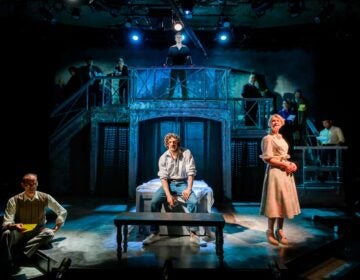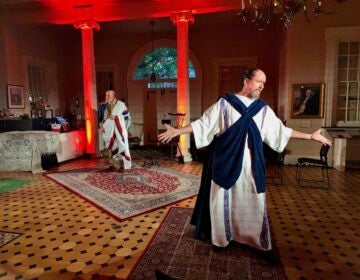Hedgerow Theatre, the ‘mother of Philadelphia theater,’ turns 100
Hedgerow Theatre in Rose Valley, Pa., was once America’s leading repertory theater company.
Listen 1:32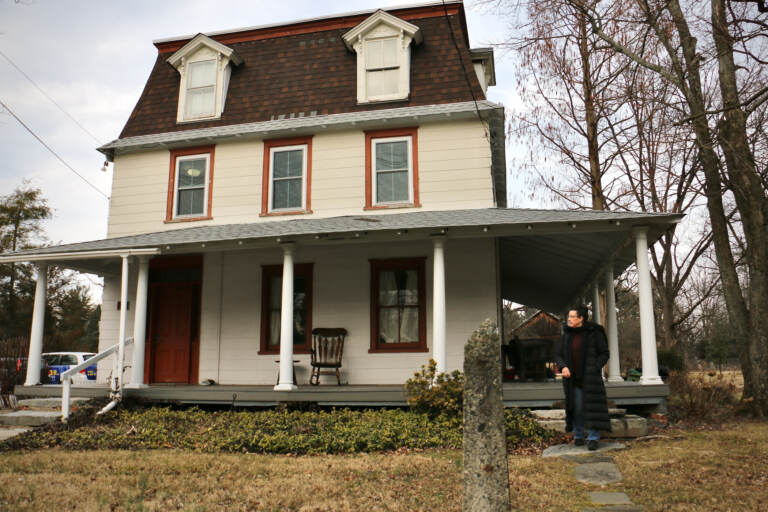
Hedgerow House, built in 1880, is on the National Register of Historic Places. It has been home to Hedgerow Theatre Company actors like Susan Wefer, who has lived there for 44 years. (Emma Lee/WHYY)
Hedgerow Theatre is celebrating its centenary this year as one of the oldest continuously-operated theaters in the greater Philadelphia region, second to the 215-year-old Walnut Street Theater.
Although located outside Philadelphia in a 19th-century stone grist mill in Delaware County’s bucolic Rose Valley, Hedgerow has launched so many acting careers and other companies that executive artistic director Marcie Bramucci says it has been called “the mother of Philadelphia theater.”
“We’re deeply entwined in this ecosystem of Philadelphia theater,” Bramucci said. “People’s Light was founded out of Hedgerow, and Curio Theatre and New Freedom Theatre, and others in New York.”
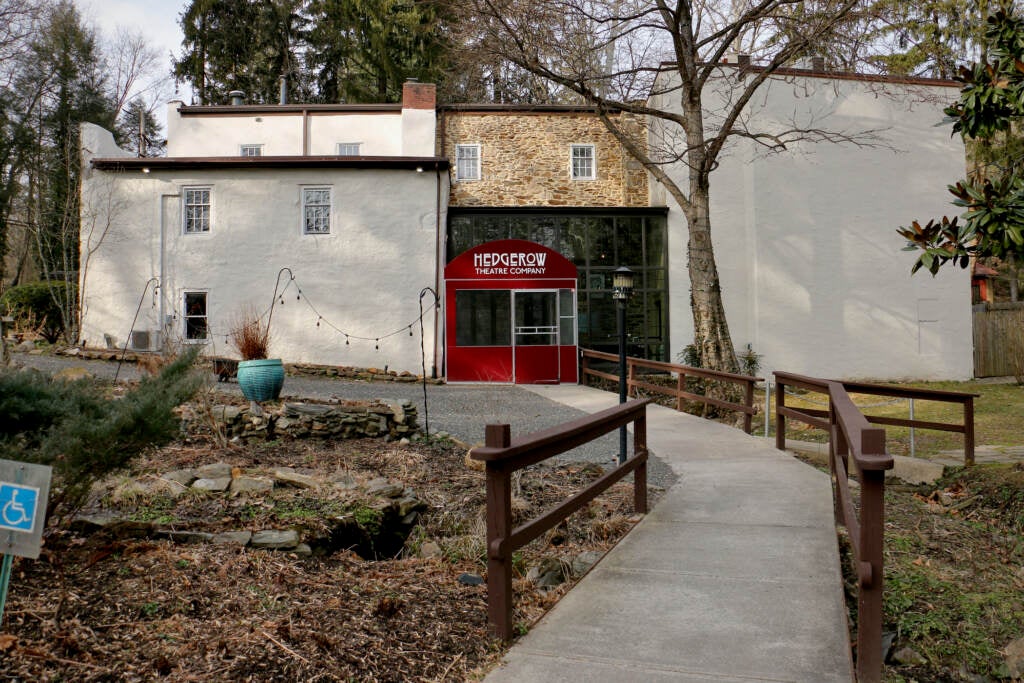
Talent seen on the Hedgerow stage has included Ann Harding, Austin Pendleton, and Keanu Reeves.
The company was founded as a collective by Jasper Deeter, an actor and director who left New York when he felt the city’s theater scene was becoming too commercial. In 1923 he discovered the former mill, which by then had been sporadically used at the turn of the century as a theater space: for several years Rose Valley had been a utopian community of artisans collectively making furniture, pottery, and metalwork.
“He came to Rose Valley and fell in love with this particular building and this community, which was anchored in the Arts and Crafts movement,” said Bramucci. “It was an entire community of artists and artisans.”
Deeter created Hedgerow as a repertory theater, meaning it would stage a different play almost every day. He championed new work, forging close ties to contemporary playwrights of the day like Eugene O’Neil, George Bernard Shaw, and Seán O’Casey.
For the centenary, one of the early season programs from 1947 has been blown up and hung in the theater lobby. It is a circular, radiating chart of dates and titles that visually explains the company’s constantly changing performance schedule.
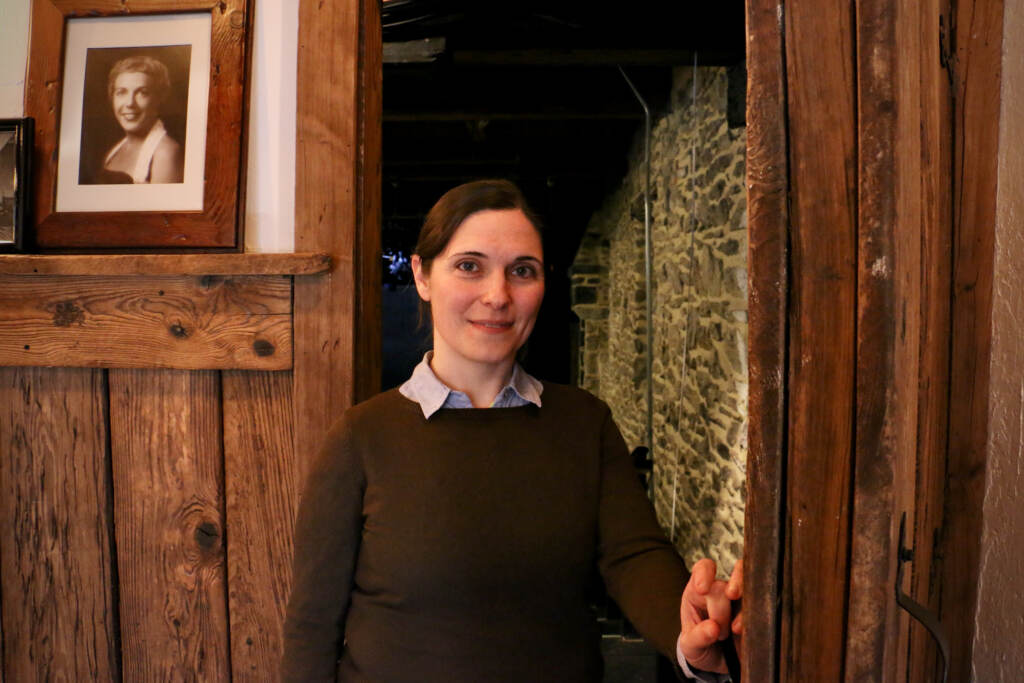
When it started, company members lived and worked together in a farmhouse about a half a mile away from the theater, doing everything collectively: from acting to arguing over programming decisions to constructing stages to selling tickets, as well as sharing household duties like cooking, cleaning, and shopping.
During World War II, company members also tended a small farm, raising a garden and livestock adjacent to the farmhouse. Back then, company members were not paid a salary, but had their living expenses covered and received an allowance.
Bartering was part of the company’s financial model. Wharton Esherick, the famed mid-century wood artist and furniture maker, made a table and several chairs for the company in exchange for acting lessons for his daughters. He also made wood-cut prints for many of their programs and posters.
Those now highly valuable Esherick furniture pieces were sold in 2020 out of concern for their condition in a high-traffic theater environment, and to give the company a needed financial boost. The collection was auctioned for $394,375. Bramucci said the proceeds are being used to create an endowment.
In 1948 Hedgerow attracted the attention of the U.S. State Department, which made it the subject of an 18-minute a documentary, “A Repertory Theater.” The film followed a day in the life of the company as they shared meals on a long farm table, helped each other with chores, and collaborated on creative decisions.
“It is the only theater in the country where plays are presented in repertory, continuously for over a quarter of a century,” the film proclaimed at the time.

Susan Wefel, who has been a company member for 44 years, said the film was ultimately never distributed because Hedgerow wound up looking too much like Communism for a post-war American government film.
When Wefel first came to Hedgerow in the 1970s, it still operated as a kind of theatrical commune.
“We all share duties, things that we might be good at or things that we’re learning to do,” she said. “It could be costuming, it could be publicity, it could be building a set, it could be many, many things running the household, keeping the toilet paper rolling, anything to keep this place going in a happy fashion.”
Wefel’s lasting commitment to Hedgerow was born in flames. In 1985, a few years after she joined the company, a fire devastated the theater, completely destroying the stage and damaging most everything else.
Many company members decided to leave. It took Wefel and her remaining cohorts five years to rebuild.
“I felt like I’d be a rat deserting a ship if I left,” she said, recalling asking for change at local supermarkets. “I remember I was sitting there in front of the frozen food section with a scrapbook of pictures of the fire, and a spring water jug, saying, ‘Help rebuild our theater.’”
Wefel still lives in a room in the collective farmhouse, now on the National Register of Historic Places, along with a rotating roster of visiting fellows and resident artists, but the company no longer operates as a collective. Jobs are more delineated so that actors are only expected to perform, designers to design, directors to direct, administrators to administrate, etc. Everyone is paid accordingly.
Hedgerow is also no longer a repertory company. It now has a more traditional schedule of a few main productions every season, plus theater training and an education program that goes into area schools.
“The repertory model became hard to sustain. There were sometimes 40 or more company members who would know all of these roles in all these different productions,” Bramucci said. “There were 150 plays at one point that were in repertory, that people were expected to know.”
Bramucci has launched Hedgerow’s centenary year with the regional premiere of “Good Grief,” a coming-of-age, “heartbreaking” comedy by Ngozi Anyanwu, an actor and writer born in Nigeria and raised in Bucks County.

It is a loosely autobiographical story of a Nigerian teenager awkwardly negotiating cultural assimilation as she grows up in the American suburbs, with language that “reaches for the stars within the darkness,” according to a 2018 review in the New York Times.
“Producing a writer like Ngozi here at Hedgerow reminds – this is harkening back to our founding of producing bold artists who are deeply anchored in themselves,” Bramucci said. “Ngozi is one of these authentic voices that are entirely their own. Those are the kind of playwrights that have emerged and been supported throughout Hedgerow’s history.”
“Good Grief” runs through February 26. Hedgerow Theatre will throw a 100th anniversary gala at the Community Arts Center in Wallingford, on April 29.

Saturdays just got more interesting.
WHYY is your source for fact-based, in-depth journalism and information. As a nonprofit organization, we rely on financial support from readers like you. Please give today.





